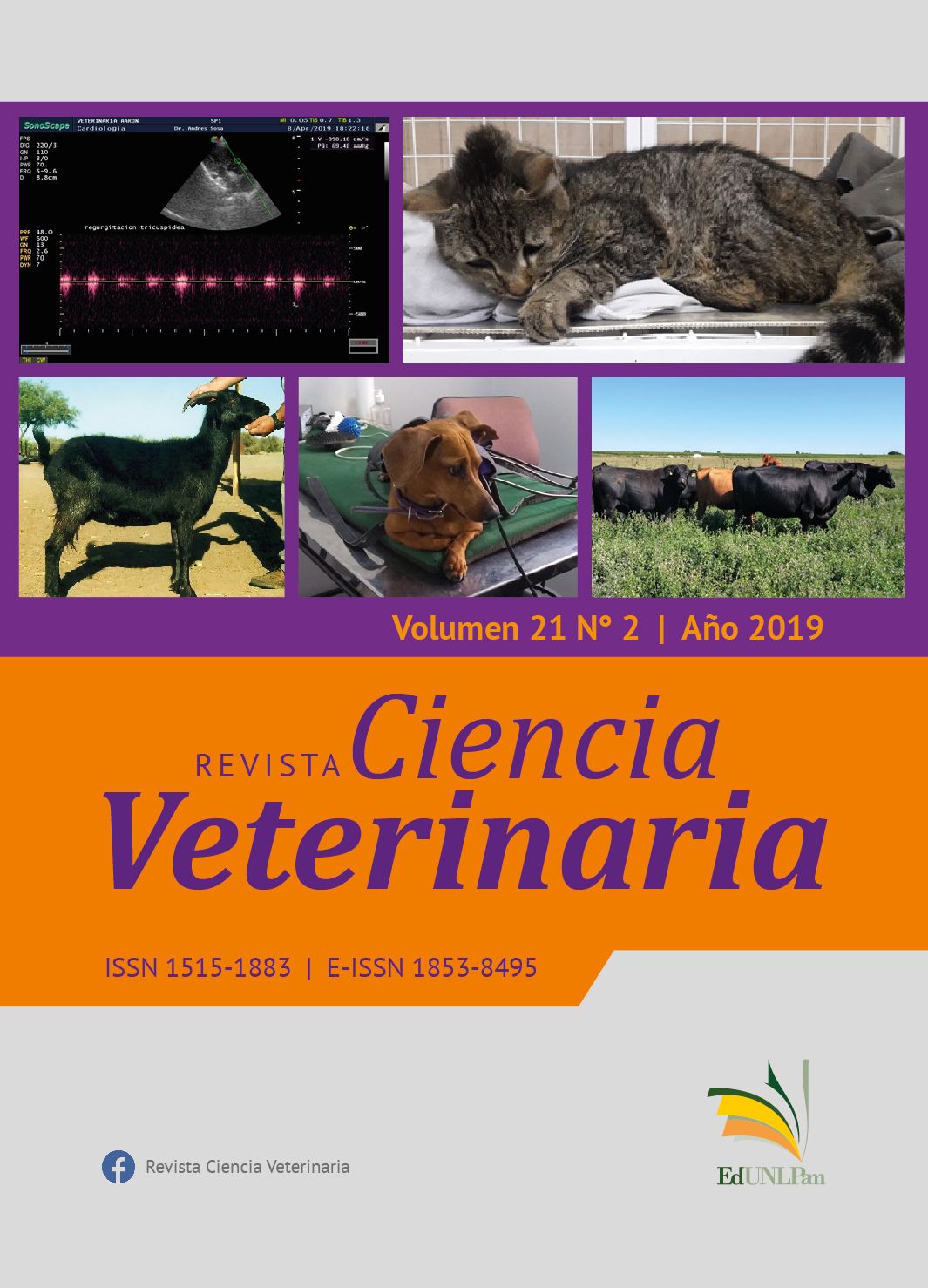Type I disc herniation in Dachshound
DOI:
https://doi.org/10.19137/cienvet-201921208Keywords:
condroid degeneration, pulpy nucleus, hydroelastic, condrodytrophic, x-ray.Abstract
Disc Hernia type I is a condroid degeneration that leads to calcification of the pulpy nucleus and the consequent loss of the hydroelastic properties of intervertebral disc. Its presentation is most common in chondrodistrophic breeds canines, being Dachshund the most predisposed to suffer this pathology. It is important to mention that it can appear in other breeds such as the Poodle, Basset Hound, Teckel, etc. This disease is mainly diagnosed when the animal is young, because it is an early degenerative condition of the intervertebral disc. This work describes the presentation of a five-year-old canine patient, Dachshund, who arrived to consultation with flaccid paralysis of the posterior limbs and lack of control of sphincters. A complete clinical- neurological examination and after that, a spinal x-ray were performed, confirming the diagnosis of such degeneration.
Downloads
References
Fossum TW, Hedlund CS, Hulse DA, et al. Cirugía en pequeños animales. Editorial Inter
- Médica. Buenos Aires, Argentina.1999.
Beltrán E, Feliu-Pascual AL, Mascort J, Sánchez M. Enfermedad discal intervertebral
(I): anatomía, fisiopatología y signos clínicos. Clin. Vet. Peq. Anim. 2012: p.7-11
Couto, CG. Medicina interna de pequeños animales. Editorial Inter - Médica. Buenos
Aires, Argentina.2010.
Santoscoy Mejía EC. Ortopedia, neurología y rehabilitación en pequeñas especies.
Manual Moderno, Colombia. 2008.
Fossum TW, Hedlund CS, Hulse DA, et al. Cirugía en pequeños animales. Editorial Inter
- Médica. Buenos Aires, Argentina 1999.
Downloads
Published
How to Cite
Issue
Section
License
Al momento de enviar sus contribuciones, los colaboradores deberán declarar , de manera fehaciente, que poseen el permiso del archivo o repositorio donde se obtuvieron los documentos que se anexan al trabajo, cualquiera sea su formato (manuscritos inéditos, imágenes, archivos audiovisuales, etc.), permiso que los autoriza a publicarlos y reproducirlos, liberando a la revista y sus editores de toda responsabilidad o reclamo de terceros , los autores deben adherir a la licencia Creative Commons denominada “Atribución - No Comercial CC BY-NC-SA”, mediante la cual el autor permite copiar, reproducir, distribuir, comunicar públicamente la obra y generar obras derivadas, siempre y cuando se cite y reconozca al autor original. No se permite, sin embargo, utilizar la obra con fines comerciales.







4.png)


7.png)



